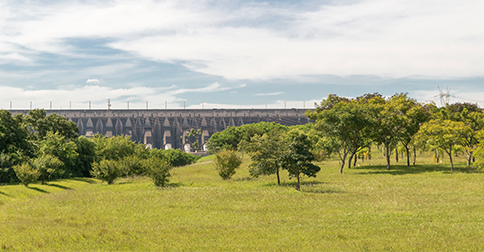Biomass is gradually catching on in North America, but it isn’t limited to just that continent. There is actually a tremendous amount of potential for biomass development in Central and South America, given the abundance of natural resources in these regions and the difficulty these countries sometimes have dealing with coal and oil for their production needs.
Biomass in Central and South America is similar to North American biomass in many ways, but one way they differ is in the feedstock. North American suppliers – particularly in the Pacific Northwest and New England – use forests as a primary feedstock for biomass plants. This is only natural, given the abundance of woodland in these areas.
South of the border, however, focus shifts from forests to crops such as sugar cane, palm leaf, malt bagasse (dry pulp residue after juice has been extracted from cane and grain), and vegetables. In some countries, most notably Brazil, thriving sugar cane industries are starting to use what would normally be considered waste for biomass purposes. Developers have also begun thinking of biomass as a primary use of sugar cane, instead of just a secondary or tertiary one.
Challenges these regions face in terms of conventional energy sources have made governments and private developers think of renewables, and biomass seems to be one of the more promising sources for Central and South America – a source that may have even more potential there, relatively-speaking, than in the U.S.
Energy Challenges in Central and South America
Energy challenges in Central and South America are similar to those faced by North America, in that an overdependence on coal and oil leaves these countries at the mercy of spikes in energy prices – not to mention the impact of carbon emissions.
The United States is a net exporter of oil, though; with the exceptions of Venezuela and Brazil, no country in Central or South America exports more oil than they import from other countries.
Natural gas, while growing and plentiful in South America, is unevenly distributed and not readily available as an energy source for all countries on that continent. The same can be said, more or less, for Central America.
Throw in underdeveloped infrastructure in many of these countries and one can see how continued dependence on conventional energy resources will strain these regions as their aggregate population grows significantly over the next few decades.
How Biomass Shows Promise
Countries are gradually incorporating more renewables into their energy mix. Costa Rica, for example, gets just under 99 percent of its electricity from renewable sources. Honduras doesn’t get a majority of its electricity from renewable sources, but it’s close – 48.9 percent (as of 2015). And other nations are planning on ramping up their use of renewables in the short-term; for example, Nicaragua hopes to reach 94 percent renewable energy by 2017.
As the price of oil inevitably rises – and as carbon emissions become curtailed by increasing amounts of regulation – the need for taking advantage of this region’s natural resources will grow. Fortunately, there is both political will and abundant resources at work throughout Central and South America. Governments are perhaps even more willing, for the most part, to incorporate biomass into their energy matrices than the United States – to the point where Brazil has even considered exporting sugar cane bagasse to be used for biomass purposes.
The main thing that Central and South America will need is the technical expertise to create and expand renewable energy infrastructures, as well as the capital investment to make it happen. For those purposes, American companies and investors are well-equipped and are beginning to show more interest in energy development in these emerging countries.
That’s why ProcessBarron has established a presence in Central and South America in addition to our operations in North America: to help the regions capitalize on their abundant natural resources and their thirst for affordable renewable energy, especially with biomass.


